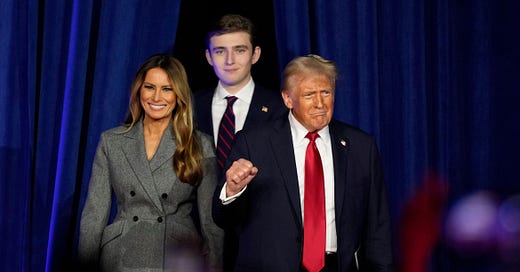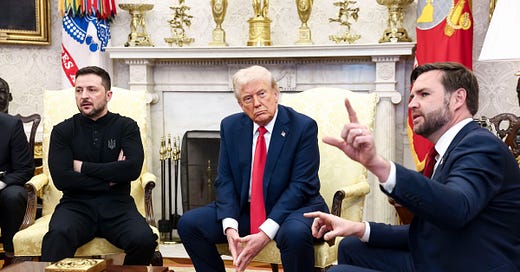
By his own admission, President Vladimir Putin has a domestic crisis on his hands.
In his major state of the union speech last week, he warned, “we realise the current demographic situation is an emergency.
“Unfortunately, this is how things are. We must accept and admit it and do something about it based on our understanding of this situation.
“Saving the people of Russia is our top national priority.”
Priority it may well be for the Kremlin but it certainly hasn’t been for the headline writers and commentators of the Western media. They devoted many of their column inches to Putin’s remarks about Nato, which were remarkably brief by his standards, the activities of Alexei Navalny – also brief – and the preparation of Russia’s armed forces.
The reason demographic trends are such a big deal for Putin is because fear of popular protest and manifestations on the streets is palpable. He is worried about the decline in his personal popularity – most likely owing to the state’s spotty record on handling the Covid crisis – and that this will show in the elections for the Duma, the lower house, which must be held by mid-September. This accounts for the arrests by the thousand of supporters of Alexei Navalny.
Putin is said to be obsessed with the recurrence of “colour revolutions”, either within the vast Russian Federation or among allies along its borders, Belarus especially. The colour revolutions occurred some time ago; the Rose Revolution in Georgia in 2003, the Orange Revolution in Ukraine in 2004-2005, and the Tulip Revolution in Kyrgyzstan in 2005. Both Putin and Xi Jinping of China are said to share a genuine fear of spontaneous uprisings and unrest from the Covid emergency, still far from over in the sprawling empires of China and Russia.
In the speech, Putin gave an unsurprisingly upbeat assessment of the Covid pandemic – a huge threat which the government with the help of the Russian people had got licked, pretty much. The extra 280,000 hospital beds were mentioned. But “Russian researchers made a real breakthrough, and Russia now has three reliable vaccines.”
But then – a bit of a giveaway here – he urged all citizens to get vaccinated. A new campaign of medical check-ups is to be launched on 1 July – and all citizens must roll up for testing.
The true numbers of Covid deaths are not known but they appear to have led to tension and trouble in the East, central Siberia and the borderlands with China.
But the disease will have contributed significantly to the record number of deaths recorded – some 2.1 million in 2020.
This has led to the biggest yearly decline in the population for 15 years, according to statistics recorded by ROSSTAT – a net decline of around 450,000 (0.3 per cent) of Russia’s 143.8 million inhabitants.
This is the heart of the domestic emergency Putin flagged in his speech. Russia has the fastest declining population of any major economy – and it is a state with the largest expanse of territory of all, crossing 11 time zones from the coasts of Europe to the remote Pacific shores of Asia and the Arctic ocean.
Mortality is up on previous years – by up to 45 per cent in Chechnya and the North Caucasus and parts of Siberia. Natality is also down to an average of 1.51 per family – which is below population replacement level.
A projection from a UN Population Department last year suggested that Russia’s population could fall to 124.6 million by 2050, and to 83.7 million by 2100 – in other words, it could very nearly half by the end of century. These are but projections, however, and the UN suggested, on the other hand, that the population could rise by 10 million by 2050 with the encouragement of immigration, improved family and welfare support.
The plight of young Russians in some old mining and rustbelt industry centres was depicted graphically in a report from Kemerovo, a Siberian mining city 2,600 miles east of Moscow, by Isabelle Khurshudyan in the Washington Post last November. In it young couples spoke of their desire to have only one child, or none at all, because of the environmental and health conditions of the region. Typically, one family had to live off £288.00 per month, which was the redundancy payment for the patriarch, the grandfather who lost his job in the mine. This is the average wage for the region. “The pandemic has made things unpredictable, and in such situations, people delay birth,” Raksha, a local worker for the ROSSTAT statistical office, told the Post.
Compounding the uncertainty and poor welfare is Russia’s high incidence of abortion. A Rand Organisation report in 1997 flatly stated, “The incidence of abortion in Russia is the world’s highest.” In 1992 Rand recorded a rate of 225 abortions per 100 live births, far exceeding the 157 abortions per 100 births of Romania, which was in second place.
Vladimir Putin announced a series of health and welfare payment measures to try to stem the demographic emergency. Subsidies are now to be paid for a first child, of around £216.00, and monthly family allowances are to go up to 5,650 rubles (£54.24) to 11,300 rubles (£108.48), depending on the region. Families are to be given a one-off payment of 10,000 rubles (£97.00) for each child in school.
“Our strategy is to return sustainable population growth to make sure that the average life expectancy increases to 78 years in 2030,” Putin told his audience at the Manezh Central Exhibition Hall in Moscow last week.
“Unfortunately, the statistics show us sad and disappointing numbers,” he said in a flash of candour. Life expectancy for a Russian male is 10 years lower, at 68, and heading downwards – for women it is higher at around 77 – yielding an average of around 72. In 2013 male expectancy was recorded as 64, owing to hard times, poor health and drink.
Demographic decline haunts parts of Europe, the Balkans especially, where emigration from countries like Bulgaria, Romania and Serbia has compounded low birth rates.
Russia is facing an annual population decline of between 0.4 and 0.5 per cent according to UN figures and reliable projections from organisations like the Bank of Finland. By contrast, the US is likely to see population growth of 0.5 per cent, and the UK 0.6 per cent.
Turning round Russia’s demographic emergency is going to be a very big task – as Vladimir Putin knows very well.









